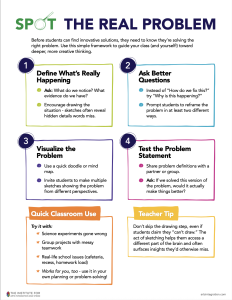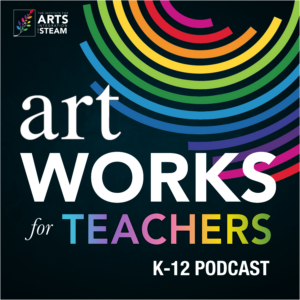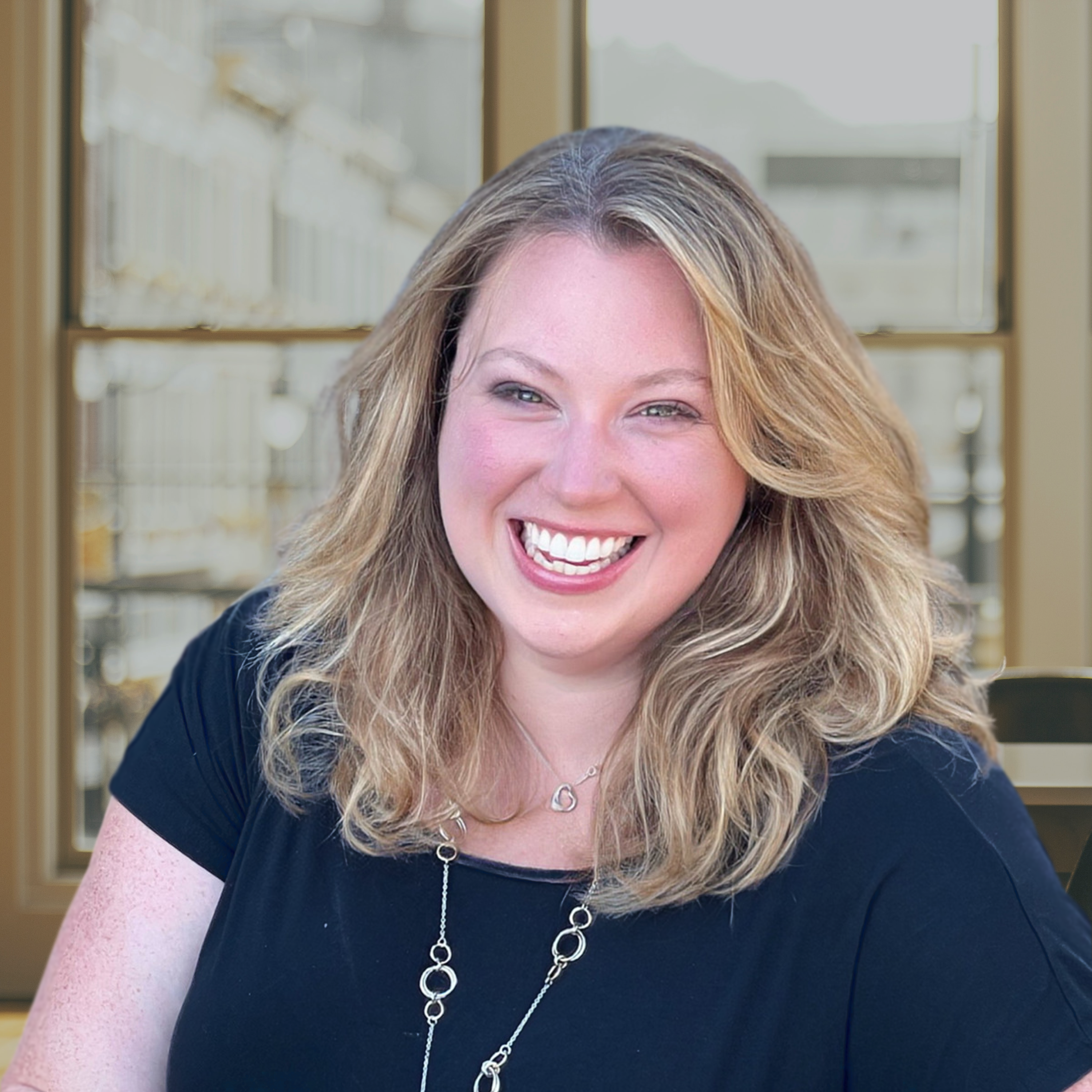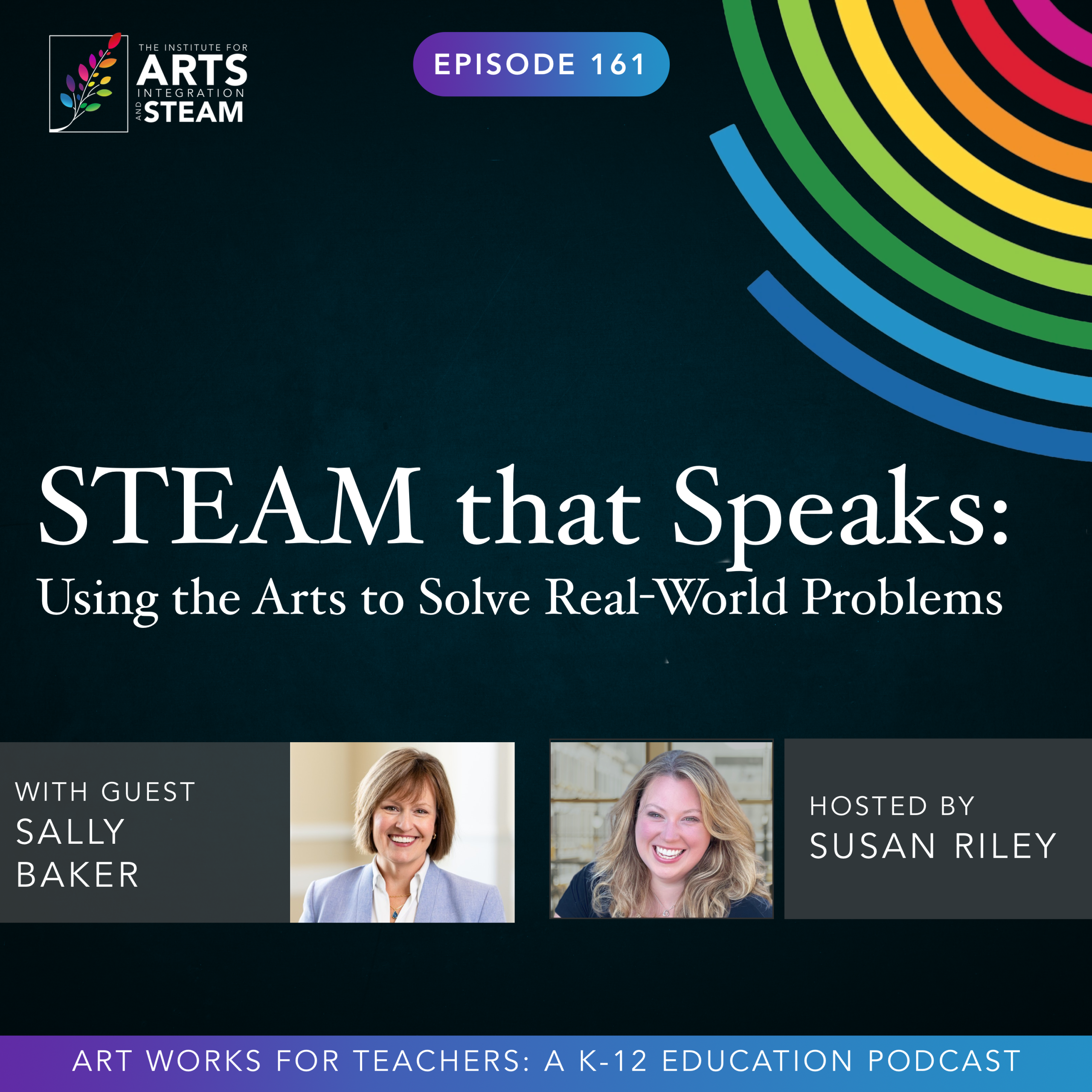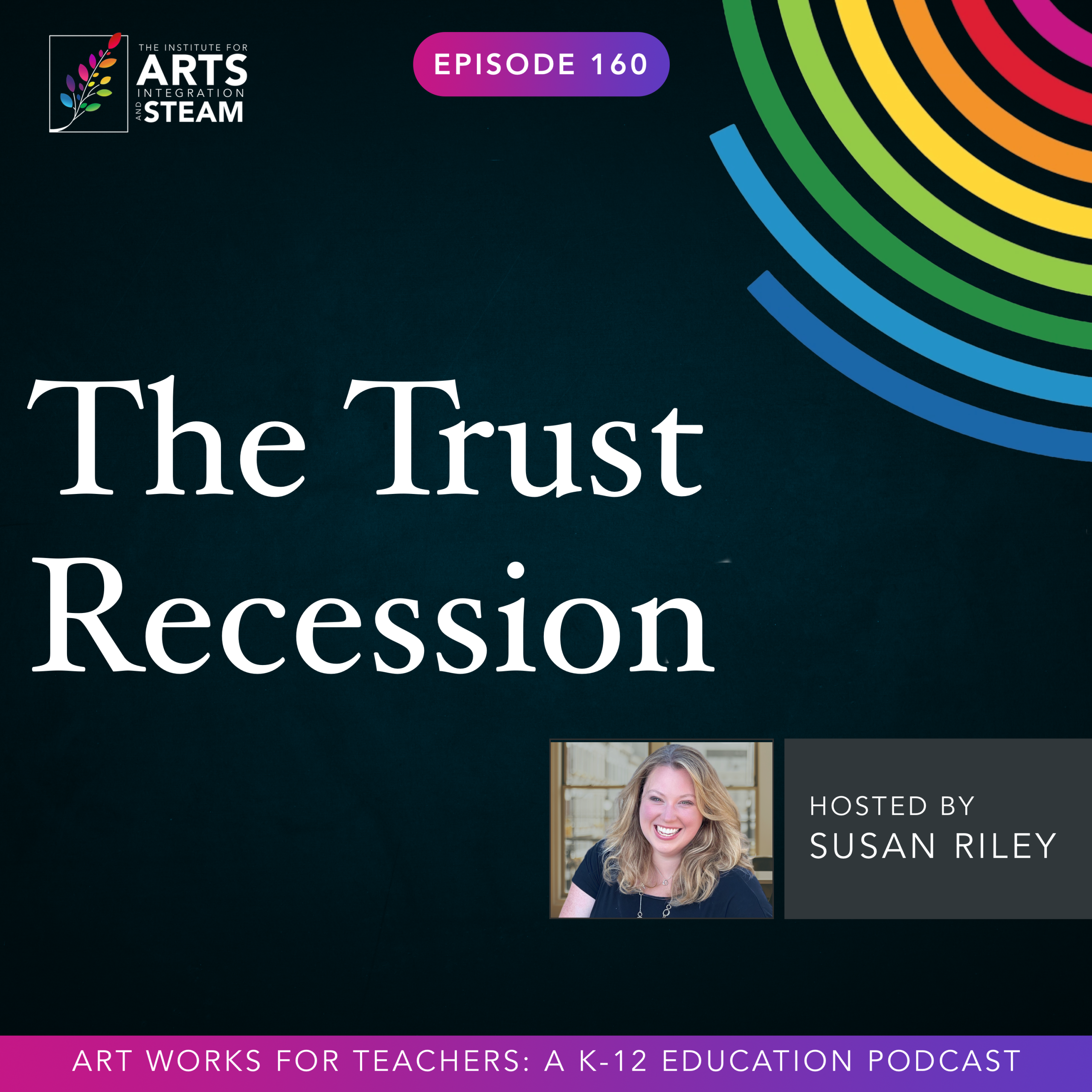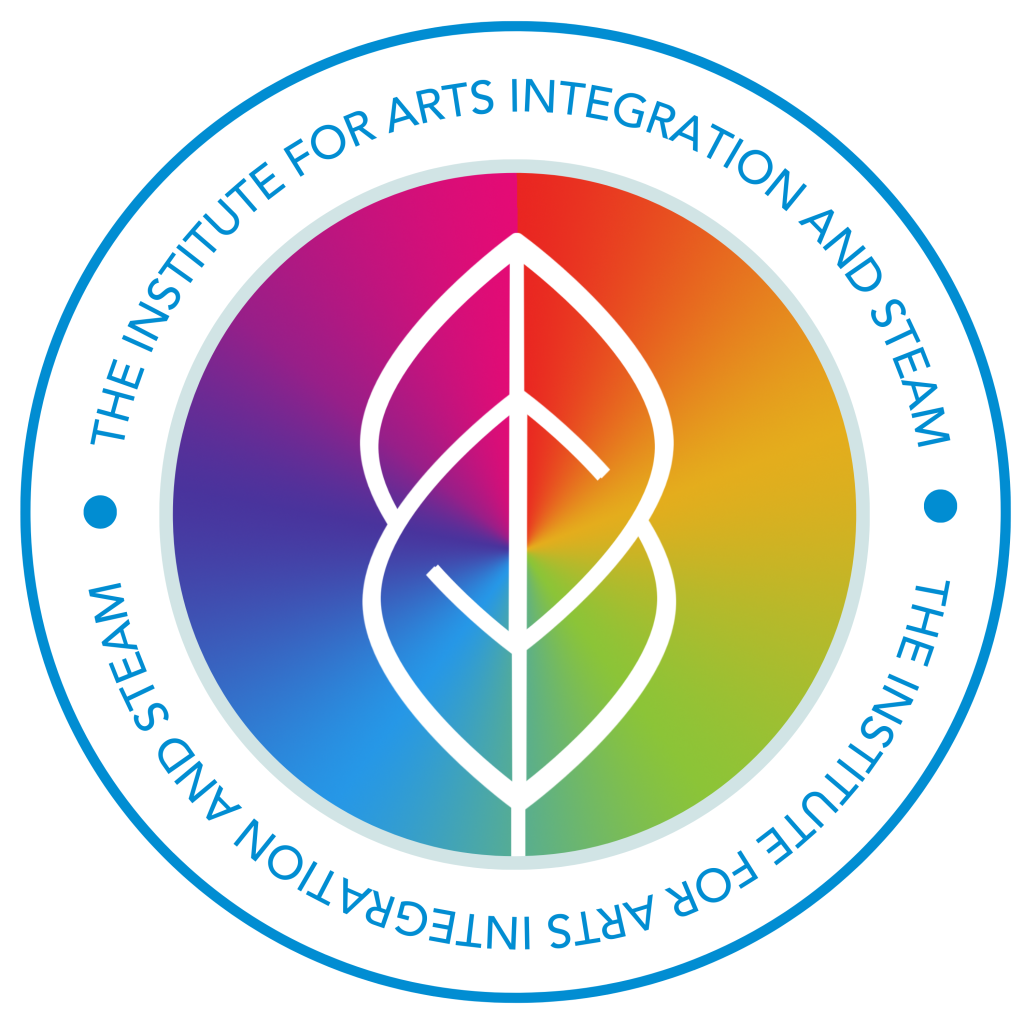ART WORKS FOR TEACHERS PODCAST | EPISODE 153 | 33:57MIN
Are You Solving the Wrong Problem?
Enjoy this free download of the Spot the Real Problem Resource.
Well welcome Anne, I'm so glad that you're here with us today.
Anne
Thank you. I'm just so thrilled to be here.
Susan
Well, can you start by telling us a little bit about yourself and your journey for creativity and where you are now on that journey?
Anne
Yes, I was thinking about that. I always called this a happenstance-ical journey. It's kind of two separate worlds came together at some point. I've always had a personal art practice. It's just been my life. I've usually kept it, for the most part, I've kept it fairly private until maybe about 10, 15 years ago, but it was always just something I did.
But it was never something I thought was important or a part of my life. It was just something I did and I went ahead and just had a business career. And I just thought they were so separate. And then about seven years ago, I decided to go back to school and get another bachelor degree. And I just wanted to challenge myself. And so I went into adult education.
And you were able to focus on whatever you wanted. So I stayed focused on creativity. I just thought it was so interesting. And I just read a lot about it, did all my papers on it. And then I decided to apply for a master's of science of creativity at the Center for Applied Imagination at SUNY Buffalo. One of my teachers was Roger Firestein, who you met last week.
And I just, my curiosity about creativity just grew. And it was there that I had many, many aha moments, like many. It's like my two worlds just went. And it was when I realized the creative process that we were learning about and the creative problems and the elements of creativity, cognitive and affective were what I was doing in my studio and like the ability to imagine, taking risks, being comfortable with ambiguity. So these things I realized, I actually developed those skills in my private time and I applied them into business, which was how I was successful. And I thought, wow, okay, wow. It was the first time I thought, okay, well, this isn't so dumb or so silly.
And I had a tremendous amount of renewed respect for my studio practice. And then I just continued. And last year I started a PhD in art education. I'm just continuing because I'm so hooked on it now.
Susan
Yeah, yeah, it's like a good drug, right? Like you get a hook and you're like, yes, I want to follow that thread. So are you working with adult education now as well?
Anne
So now I'm full-time student, which is thrilling. And I will be, they did give me a course to teach next semester in the winter, a creativity course that I designed for the Bachelor of Art Education students. So I'm super thrilled to be able to do that. And it will be, my adult education has really come into play. It's been very useful to design a course for adults, not children, which is what I've always been interested in. And I do do some, sorry, did I interrupt you? I do do some work with corporate still, some creativity exercises, and I use some of the adult education principles.
Susan
Yeah, well, teaching adults is very different than teaching students, children. It is, there's a whole pedagogy around it, right? And a learning theory. But I'm curious, I know that one of your thesis papers as part of your masters was around the idea of the hypothesis that drawing specifically as a tool leads to creative thinking. Can you talk a little bit about that? Like what led you to that? Your hypothesis, did it prove out to be what you thought it was going to be? Share a little bit more about that.
Anne
Yeah, I'm impressed that you looked into my thesis. Super impressed. I get a report every month on who saw it and I saw someone from Maryland. Maybe that was you. So it's I kind of just gravitated towards it at first because I draw every day.
I do a drawing every day. And I'm doing a mural. I just, I don't know why I just draw every day. I'm also a sculptor. So it just kind of something that came up and I gravitated. And then I realized this is a good medium for people. Because the more that I'm learning about it the more I'm realizing drawing is really, it's like writing. It's something that you learn to do. But there's so much fear around it, like people, like, right?
Susan
Yes, yes, I'm one of them. I'm a trained musician, but I am not a trained visual artist. And so like, I never got good feedback on my drawings as I did for music, right? So I, it scares me a little bit, to be honest.
Anne
I hate that. I hate that when I hear people say that. Because so it is a learned communication tool. But I read a lot of Dr. Betty Edwards work. And she talks about analog drawing. And analog drawing is like structured drawings. It's like you think of something and you do a drawing. So I did one this morning because I wanted to show you as an example. So this is an analog drawing.
So it's something you can do, right? Do feel like you can do something like that? Yeah.
Susan
Yes, yes, yes. For those who are listening and not watching, this is like a very large oval, almost like a track, like think about a track. And then in the center, on the upper left quadrant, she has like a circle, and then there are lines of varying sizes and angles that are connecting the circle.
Anne
Thank you. so, yes, and so what Dr. Betty Edwards wrote about in her book, I think it was the one, The Artist Within, and it's using analog drawing and you think through it. So you don't think and then draw. You just think about a problem. So for me, this was a few years ago, how I felt in my new community.
So when I moved here four years ago, just during the pandemic, I felt very isolated. And I thought, my gosh, am I gonna have to move again? Like, is this the right place for me? I feel disconnected. So that was me, the little circle with lines. This was me kind of feeling broken in this big empty place. And I just felt it and then I drew it then this is what the drawing came out. And it's something that I realized that this is accessible to everybody that you can do and it's drawing your problem. And the reason why that's interesting is because it accesses a different part of your brain. It's like, I would have never thought about that, you know, if I were to describe it or write it. And so then the other part of this exercise is
The idea is to identify this kind of issue you might have, then try to look at it differently. And the way you look at it differently is you turn your drawing upside down. And then is there something that, do you see your problem differently? But you still think about a problem. You still ask the question, like, you know, what's the problem? So then I do it upside down. And then the idea is, well, develop the drawing if anything comes to you. So then I turned it upside down and I started drawing these vines out of it.
And I didn't really know what I was doing. I was just kind of drawing the mind. And then I thought, because it's always about a question. Well, what if, what if I'm the seed to a community? What if the solution is not to move again, but to grow a community where I am? What if I stay put and grow something? And so it's been four years now and that's exactly what I've done.
And every time I go walk my dog, I, there's someone I stop with and talk and I have a community, Christmas party every year. And it's like, it was life changing. Yeah.
Susan
Yes, yes, that is such a tangible, I mean it's not hyperbole, that is a tangible life change. Yes, yes, wow, that is powerful.
Anne
It is. It is powerful and I'm just so hooked on it.
Susan
I mean, but seriously, that is something that no matter who you are, if you feel like you have no artistic talent in your pinky, you know, or that phrase, I can only draw a stick figure. Yeah, you can. And then turn the stick figure upside down and create something else with it, right? I love that.
Anne
There you go. There you go. So these are called structured drawings. it's so that it's hard to come up with the terms to not freak people out. But analog drawings or structured drawings, just so that you don't like, it's not about being a good drawer, being good at drawing, which I happen to be, which is another problem in a way, because people see my drawings and they think, well, you know, I can't do that.
They get intimidated. So in the thesis that you wrote, that you read, part of it was when I went to Italy to a conference, a CREA, there were, with a lot of business consultants about creativity. And I did this exercise with them. And I was so scared because I thought, Oh God, what if like, what if nothing happens? But there were 14 people and 12 out of 14 had these huge aha moments in their life. I got chills being there with them because they saw major issues just like differently and they saw workable solutions to them. It was amazing.
Susan
That is powerful. I'm excited to try that. I'm seriously going to try that today and probably it'll go in our newsletter as a strategy for people to use. mean what a helpful piece and thank you so much. Now I know you also provide some workshops for folks and that you emphasize understanding and defining the right problem before jumping into that because and I think that's so highlighted in what you just shared, right, that identifying that right problem before jumping to the solution. So what's the first step to doing that? Why is that so critical? And what changes when people actually prioritize that?
Anne
Yeah. I guess the first step is, it's hard because you have to try, think Roger talked about this last week, is to try and keep people in the problem mode. And that's what our thinking is all about, is really keeping, staying with the problem. I think Einstein said if he had an hour, he would spend 55 minutes on the problem and then five minutes on the solution. Funny enough, we don't seem to get that, you know, we're still so solution oriented. So for example, mine, my little exercise here, what I did, I would have, my solution would have been, okay, I guess I have to move again, because I'm comfortable moving. I come from an air force background. We moved every two years. Like that was the solution. So I would have done that. I would have never that I could be a seed to a community. I would have never considered that. So now that I, now it's super important to look at it differently. Like when I did that workshop in Italy, one of the ones that really stood out to me was this woman who was having problems with her mother, her aging mother. It was a really difficult thing. And I think it was almost, she was almost at the brink of divorce.
And she drew the problem. And then when she turned it upside down, she started to see her mother's point of view. And it was so illuminating. a different solution just came to the surface. I think looking at the problem, what I've learned is looking at a problem differently and staying with it, more creative solution seems to float to the surface.
No, that's not a very academic term, but it just seems to come about. Like you just look at it differently. And if you, and if you don't, then it's fine. Then you know that maybe you've thought the problem through and it's, you know, it's the problem is the problem. But it's almost like slowing down and taking a look. Okay. What are all the things here? And I think success has a lot to do with dealing with the right problem.
Susan
Ooh, talk more about that. What is that? What do mean by that?
Anne
Yeah. I think that… if you keep tackling the wrong problem, problem, it's almost like, you know, the repetition is what do they say repetition is like a form of craziness if you just keep doing the same thing.
Susan
Yeah, doing the same thing and expecting a different result is the definition of crazy. Yes. Yes.
Anne
So you can't move forward, you can't have any success. And by success I mean like something that you feel is successful. You define a success, your achievements of some sort. And you can't get there if you are not dealing with the right problem. If you just think, God, this is a big problem and I'm just going to have to live with it. I know some people who are very committed to their problems. Right? And anytime you try to come up with a solution, they're like, but they'll come up with a new problem. And to me, success in whatever way you define that is really about looking at a problem differently that you can handle. Because most people think of a big problem that, God, I can't, I can't handle that. I can't deal with it. If you can, and artists do this very well, like try to put things in little chunks, know, like little manageable chunks.
Susan
Yeah, yes. Well, and I, this is so illuminating, because, no, seriously, because the, I think I'm reminded a lot of manifesting and what people who talk about allowing yourself to sit and approach problems from that perspective, that 20 % of the work is the actual work, right? 80 % is how you connect to the work, how you connect to yourself, how you connect to your higher power, whatever that may be. 80 % is everything else, right? 20 % is just the work, 80 % is everything else. And I feel like 80 % here is the problem, right? Is being able to sit with the problem. And I also think it's so interesting that our phrase problem solving, that we jump to the solving piece as if that is the whole point rather than, I mean, even really trying to look at the problem at all, right? It's just, here's the problem, now move on to solving it so that we can button that up, package it, put it away and move to the next thing. I know that we do this in schools a lot, but I also think to your point, we do it a lot in life, right? We're not willing to sit in the uncomfortability of a problem, right? But I think what you're sharing about sitting with it, looking at it from different angles, not jumping immediately to solution, but actually trying to understand the problem itself is so important.
Anne
Yeah. I like that you're right about that. just realized you're right about the problem solving. It's called problem solving. It's not called problem defining.
Susan
Yes, absolutely. it's something that every business owner says, that's what I want for my future workforce is people who are problem solvers. And the good problem solvers sit with the problem for a long, time. Yes.
Anne
Yeah, yeah. And then what's cool about this, this little exercise and other things with art thinking is that it goes to a different level in that you're looking at the problem from a different part of your brain. You're accessing a different part of your brain that is usually, you know, comes out in dreams or when you're daydreaming or, you know, when you're asleep or artists are trained to access that part, but a lot of people aren't. But again, it's something that we can train people to do.
Susan
Right, it's not something that is you're born with or you're not. It's something that you absolutely have access to. You just have to figure out how to get there, right? Yeah. So I'm curious, like I work with teachers a lot. I do a lot of professional development. So I thought about like if professional development for teachers were redesigned through the lens of art thinking in this way, what would it look like and how might it change like our approach to classrooms, you think?
Yeah, this was a great question. I'm so glad you sent it to me ahead of time. Yeah, it did. It was good though. I love it. there's, so I did a big literature review last year on art thinking and really got to understand what the academics said about or what some most of the academics said about art thinking and it really goes down to the artistic mindset. so there's, four, there's six kind of characteristics of the artistic mindset that I think is something that could be transferred quite easily into the classroom in all, in all, studies. So the first one is play. And what play means is letting go of preconceptions and mental models. It doesn't mean, you know, Lego or whatever, although I know that you can, Lego does have something, but it's really about, really play is like, it's like intelligence having fun, you know, just it's like my, drawings are like that. I just, honestly, I have fun and I giggle every time I create something really weird. And it's just letting go of those things. And a lot of times what happens when you play is cool new ideas come to mind. So the second one is called bifocality. So it's an ongoing change of perspective, switching from detailed to holistic view. And artists do this very well. So for example, in my mural, I know that on the radio you can't see that. So my mural, I have like, you can't see, I have a lot of lines around. And in those lines, I have to step back and look at the big picture and then I have to go in and look at the, like I had, I drew an armadillo and I have each scale of the armadillo drawn. And then I had to go back and look at the shape. So it's like going in and coming out. And so that's called bifocality. And that's something that you can apply to anything. Like you're even in math, you know, you look at the little problem and then you say, okay, how does this fit into the big problem?
And then the other is called multivalency. think I'm pronouncing that right. it's an openness to experience. It's, it's having no premature judgment of right or wrong. This is so hard to do. Like, so, I mean, I find sometimes, my God, I'm so judgmental, like, right. Of what right or wrong is, but being open to experience is actually one of the key things to innovation is.
Just seeing things for what they are and not identifying it right away. I know what that is. know what that is. The other is ambidexterity as far as your mind goes. And what that means is simultaneously exploring unconventional solutions while as well exploiting proven concepts. Have you heard of the Steal Like an Artist, that book? Yeah.
Susan
Yes, he was our keynote at our conference this past summer. Yes, he's wonderful. Yes, you're welcome. absolutely. No, Austin is great. Austin Kleon.
Anne
Amazing. my gosh, I have to go to your conference.
And so that's trying, so it's like, the word is exploiting, but it's grabbing things that have already been proven, but also looking at what's unconventional and then mashing them up. artists are, so there's a real term amongst artists called mashups. you take one idea and do another. Johnny Depp is famous for that. He mashes up two characters and creates a new one.
It's kind of like that. Improvisation. So I call my drawing exercise every morning improv drawing. So it's really just being present in the moment and intuitively responding to things. So when I draw, I let one decision inform the next. I just throw a mark down. I don't think about it. And then I just let, and that's how this mural is being developed. I just let one decision inform the next.
The next thing you know, I have armadillos and monkeys together for some reason. Oh, yes. Maybe I'm, oh, maybe that's what's coming through. I love White Lotus. The wallpaper is beautiful. And the last one.
Susan
It's very white lotus, very white lotus, right?
Anne
The last one is embodiment. So we talk a lot about that in academia, embodied cognition, and it's really beyond cognitive information. It's just like, it's like gut feeling. We call it sensory knowing and not, and when I was in business, like I used to always kind of ignore that. And what I'm realizing is
No, that's actually really important. Like to really, what is your gut? Like don't ignore that, this embodied cognition that you have. What's the sensory knowing that you have? Because a lot of times we'll, something will happen, we'll look back and like, you know what? I knew that, I felt that. And so it's not ignoring that and keeping that in mind. And those really help you look at things differently, learn, help you learn. And these are also characteristics of innovation.
Susan
So true, and I can see that in each of the six that you shared. So do you, when you work with others and you use those six elements, do you use them all at once? Do you kind of break them apart individually or do you kind of mix and match?
Anne
I figure out what's the objective of the session and what would help get them there. I always put play in there though. Play is quite important, I think. With adults, it's important. And I get surprised all the time by how much I can get them to play. Usually, I'm so surprised by that.
Susan
Hmm, makes sense.
Yeah.
Susan
Yes, yes, it's like when I bring dance into a session, I'm always like, nobody's gonna move. They're gonna sit there and just put their arms around and inevitably everybody moves because they just, again, your body knows what it needs, right? After sitting for so long, absolutely. So across, you've worked in so many different industries. You've worked in business, you've worked with art, you've worked in academia. So across those industries, what do you think is one of the most surprising or memorable moments that you've seen when somebody discovers the impact? So when you're working in these six or you're working in any of these elements, what was maybe something surprising or a moment that really caught you that you were like, that embodies exactly what I'm trying to do here.
Anne
Well, the Italy example was amazing at Korea, just having everybody see. But I think one of the ones that really stands out for me was when I did, was it on strategic planning? I think it was a problem-solving workshop I had to do with doctors. And I think there were 30 doctors from across Canada, and they were like leads in their in their area, therapeutic area. And I thought, my God, this is going to be tough. And I wanted to do an exercise called the six thinking hats. Have you heard of that? Yeah. And I actually bought hats, very weird hats, because I wanted, you know, to bring in play. So there was the yellow hat, the green hat, white, black and blue.
And so I bought like this black one. It looked like almost like a pimp hat in a way. It was so funny and just different things. And so I said to them, okay, we're going to solve, we're going to talk about this problem and identify some creative solutions, but we're going to do this exercise. and I brought up these hats and I thought, oh my God, they're going to, they laughed so hard. They couldn't, they couldn't get it on their heads fast enough. They're like, oh my God, this is so fun. So.
Then I said, okay, so you each have to play a role. And, and there was four groups. So I was walking around the room, watching them do their thing and play their role. And it was so funny. They were right in there and it was almost like they were doing a play and they were having so much fun. And in that fun, they came up with some really creative ideas. And afterwards I asked them like, how was that for you? they said, this, this was.
They thought at first this was going to be so stupid, but it was, they really got into it. And I thought, okay, there you go. know, there you go. Like play is something to be taken seriously, really. It is. yeah. And so I think that was the most memorable just because of their position and, and their training. I didn't think, but they were really into it. It was fun.
Susan
Well, Ann, I could keep talking to you forever. I just, I'm learning so much today. I'm just soaking it up, but we're, we're running out of time today for, I know, I know, it flies when you're having fun, you know? But I would love for you to share for those who would like to stay in touch, would like to know more about your research and what you're doing next. Where's the best place that they can follow your work and your resources?
Anne
My god, already? On LinkedIn. Yeah. So on LinkedIn, my name and Brisson, that's where I post every week, something new about creativity and what you can learn. Actually, I'm, I'm going to be posting mine after this, after this. yeah. So that's, that's where.
Susan
Fantastic, Wonderful. We will put that in the show notes. Make sure everybody has that. And thank you so much for sharing these incredible ideas today. you have just, it's been a light and you've just shone a light on so much today and I appreciate you so much.
Anne
Thank you, my gosh this is so fun!
Susan
Wonderful! Well, it's awesome to have fun together.
Anne
It is!
Anne on LinkedIn

